We recently connected with Christine Sauerteig-Pilaar and have shared our conversation below.
Christine, looking forward to hearing all of your stories today. Can you talk to us about how you learned to do what you do?
There’s that line in “Good Will Hunting” everyone knows, when Will is describing his math intellect and he makes a reference to himself and Mozart, “For me, I could always just play”. There is this romantic notion that to have innate abilities is to be admired. For me, the play part only comes with devotion and hard work. To develop the ability to create meaningful and emotion provoking work has been a dig in the weeds sort of dirty that I do not think I would have achieved if I could just play.
I was one of those kids in class, who quickly became the go-to for drawing Unicorns or Garfield for my classmates to “ooooooo” and “aaaahhh” over, as they gleefully skipped back to their desks to color mostly in the lines of the drawing I just kept replicating over and over for each request. So the idea that I had any artistic skill came from other people before I recognized it myself. But, then, an identity laid within this new attention, and I greedily grasped at the cloke to hide within, so I could watch from a safe pigeonhole throughout puberty and social cliques, to where I firmly landed on an art room stool and discovered that I indeed belonged in the creative space. It was here, where my art teacher saw I could play, if shown the notes, and she composed the melody with enthusiastic support. With her encouragement I was accepted at the NJ Governor’s School where I first sensed a belief in a career as an artist.
Learning the craft in college was an exhilarating time. Luscious sleepless nights finishing paintings, drawings, welding, printmaking, drawing and allowing my imagination to grow. It was here where I learned it was OK to make people feel unwanted feelings with my work. It was a safe space to explore controversial subjects, and to be open and vulnerable to the responses they created. It’s also here where I developed my language with the figure and that an artist did not have to be contained to four stretcher bars or the stiff edges of a rectangular paper. It was here where I tapped into the beginning of finding my unique voice.
Looking back on how my process has developed, I believe the essential skill I have is being open to the possibility and just trying it. Whatever notion pops up in my mind that I feel a need to make a tangible entity, I allow it to just be, and then I follow whatever steps it will take to make it exist. I’ve stopped self-curating and just work with the idea as it comes. I’m not sure if I’ll ever be a master at any one particular artistic skill, but, then, it’s not my intention to be. I prefer to seep my technique around and through the more conventional skills and hopefully, within that exploration, I’ll find I can just play.
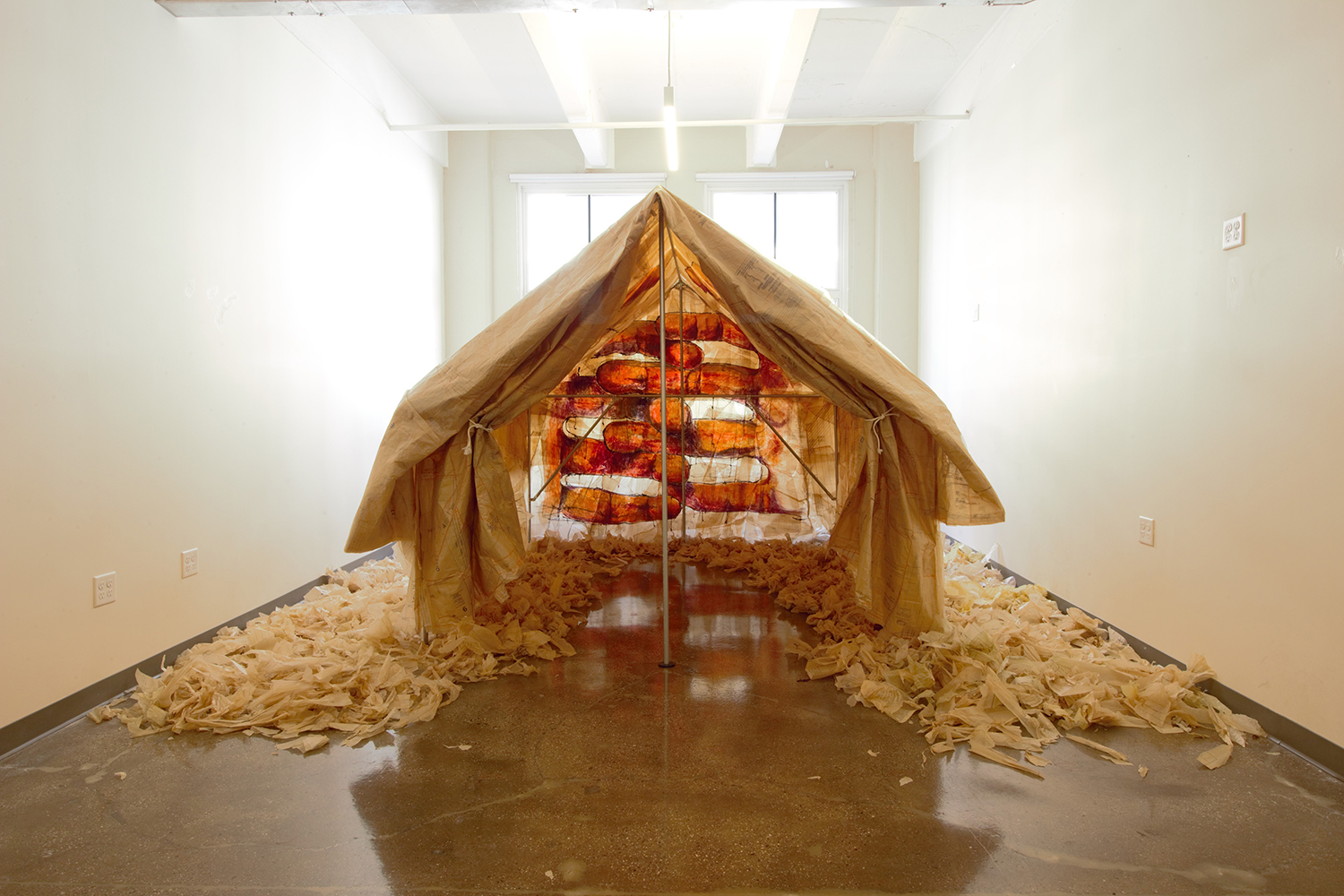
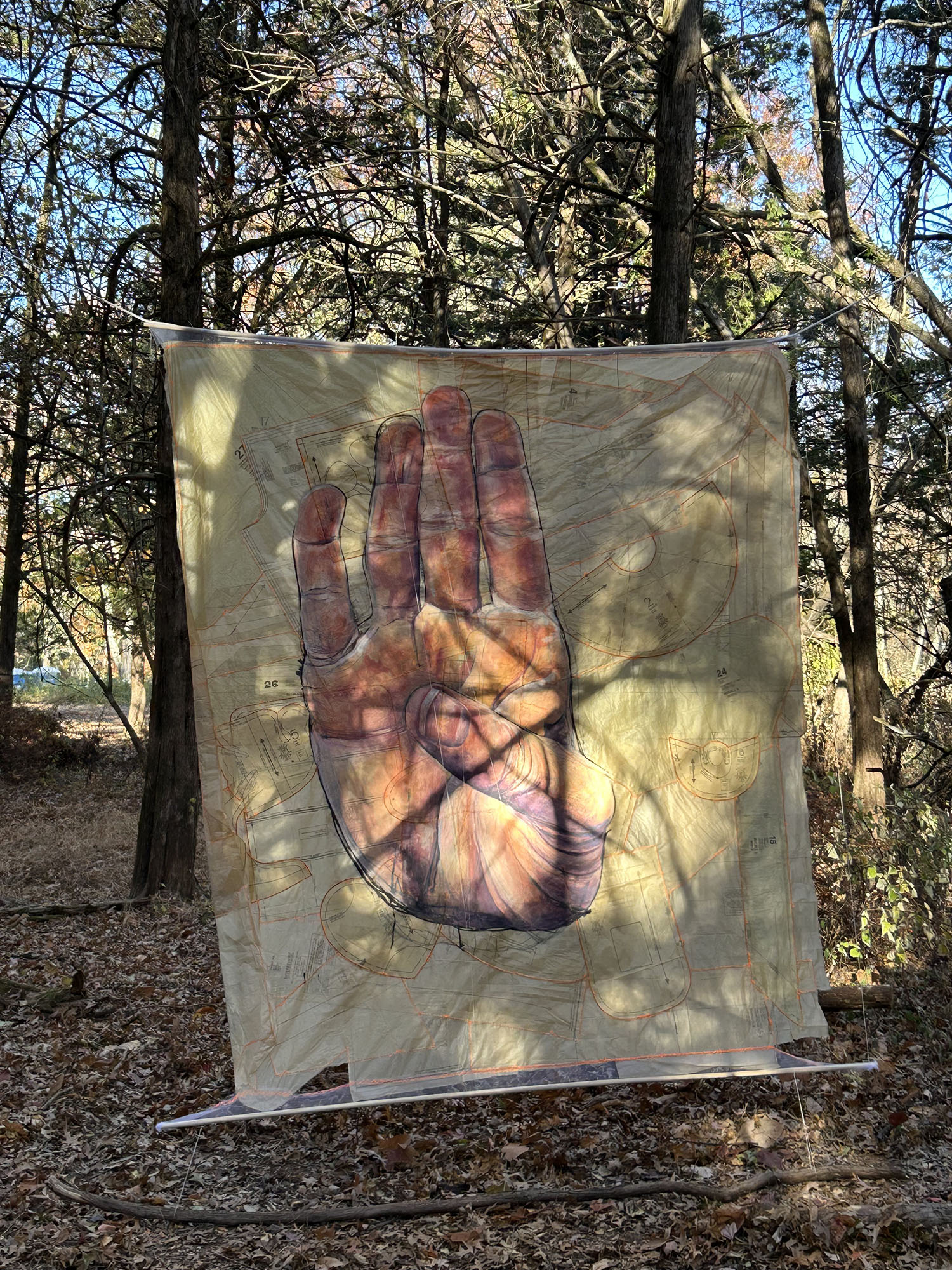
As always, we appreciate you sharing your insights and we’ve got a few more questions for you, but before we get to all of that can you take a minute to introduce yourself and give our readers some of your back background and context?
I am a mixed media artist. My main medium, for a few years now, are sewing pattern papers that are donated to me.I have most recently created a life sized refugee tent composed entirely of hand sewn sewing pattern papers. The tent is seven feet high, eight and half feet wide by nine feet long. It was created to be interactive where people can enter inside and experience the tent. There is a soundscape that layers the tent with varying environments, such as: walking footsteps on gravel, children playing, a baby crying, bombs exploding, a Spanish lullaby, machine gun fire, jungle sounds. I also created an outdoor installation where I hung large eight foot panels of hand sewn sewing pattern papers with images of hands making gestures in sign language of distress. The pieces were designed to deteriorate from the elements. I captured time lapse film of the pieces as they reacted to the environment in the woods where they were strung up between trees. The piece was a comment on our climate crisis while also addressing our short social memory.
Other previous works, also created with hand sewn sewing pattern papers are figurative, and consist of transparent fabric and drapery, gold leaf and doilies, among other traditional feminine craft materials. These pieces create a conversation about women and social constructs, while also speaking to the suffering of individuals and the isolation of the caregivers.
I create my work with the idea of pulling a viewer in through an enticing beauty or curiosity, but then leave clues that force the viewer to confront unnerving emotions. I have a firm belief that art should walk away with the viewer, that when you experience my work, you are almost forced to feel something from it. There is a certain note or wavelength in the human body that I look to strike, and the moment when someone “gets it”, standing in front of the work, that’s when the work comes alive. I have an intense desire to make art that is visceral and undeniable. In this way, I can share this feeling of why I made the work. From there, the ideas connected with the feeling can unfold.
Visually the work is not contained to a strict square or rectangular shape. The works hang from the ceiling or off the wall so that they can move and drift with waves created by environments or just by people walking by. The work is all created with the idea that they will disintegrate and dissolve over time. The papers themselves are full of metaphor and layers of symbolism for myself, but I prefer to allow the audience to encounter them with their own experiences to tell a story, rather than dictate how they should be read.
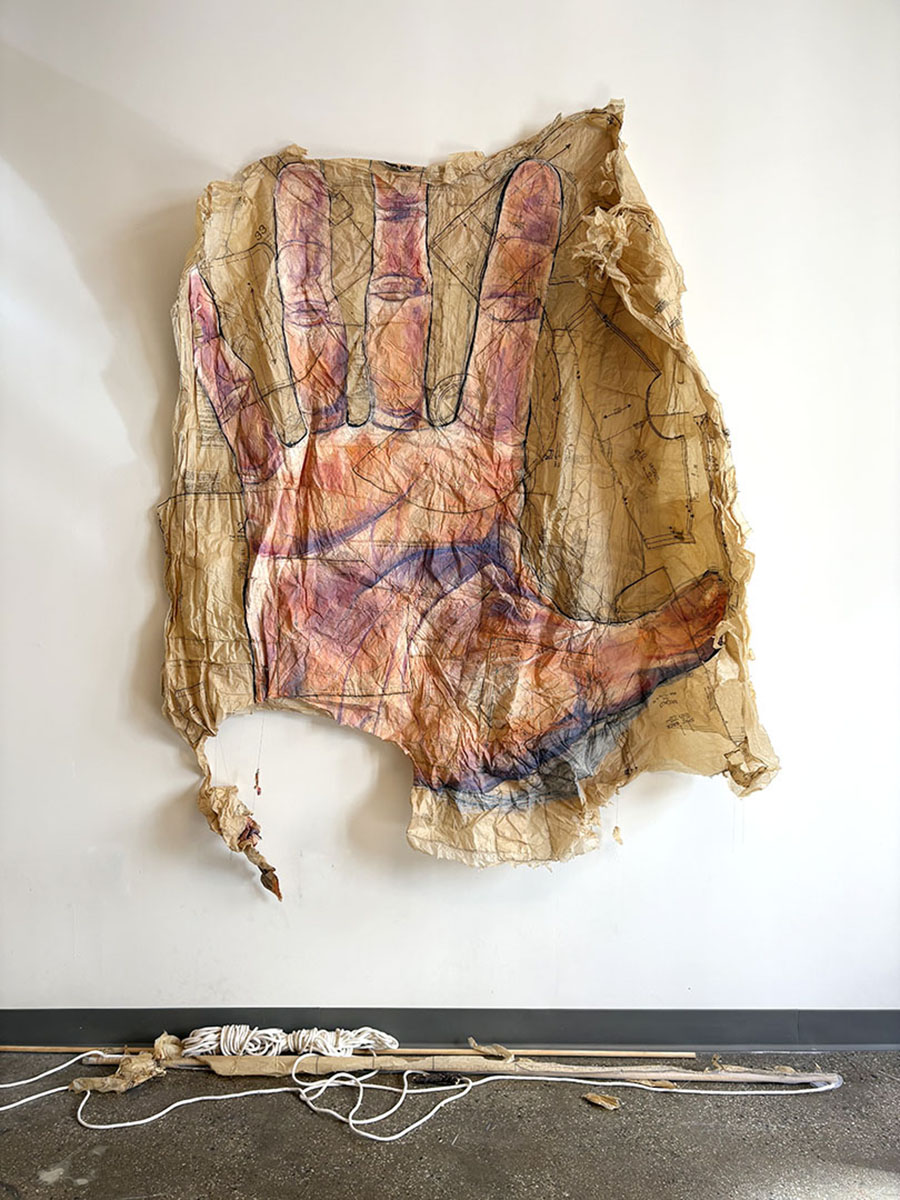

Looking back, are there any resources you wish you knew about earlier in your creative journey?
The most important resource I wish I had acted on much earlier in my career would be residencies. When I graduated college, the common practice was to send sheets of slides to galleries with self addressed envelopes for the galleries to resend back to you with their rejection notice. So things have changed, a lot. I was aware of residencies, but they were hard to find, or research, so they remained elusive. I received my first residency four years ago, and it was career altering for me. There are so many ways now to find and apply to residencies, but, I am older now, with more responsibilities that make it hard to just dash off to a months long residency. If I had the opportunities to apply back when I first left college and my younger adult years like young unrestricted artists have now, I truly believe my career would be more successful financially than where I am now. My biggest piece of advice is, go to residencies before you get tied down.
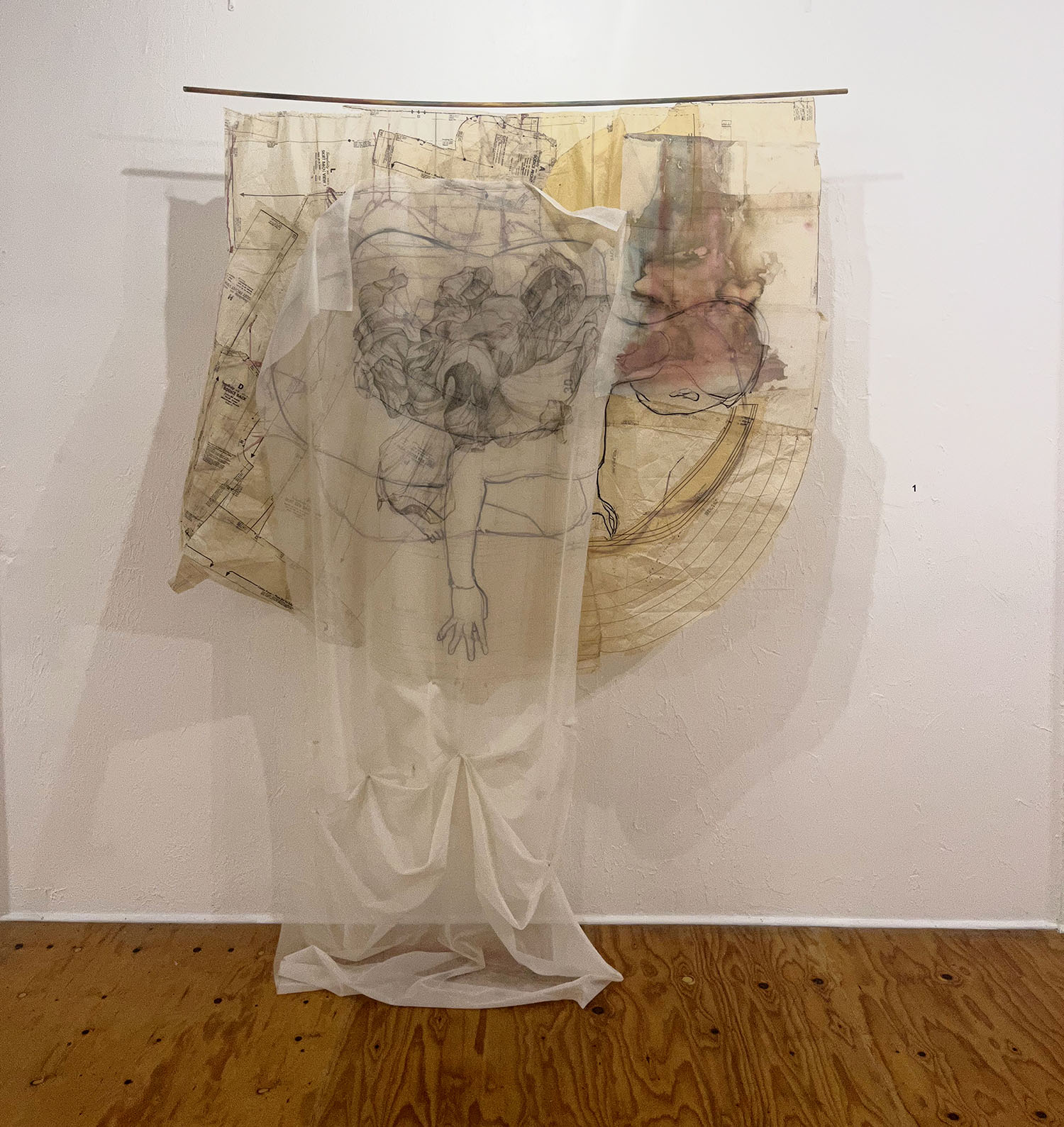
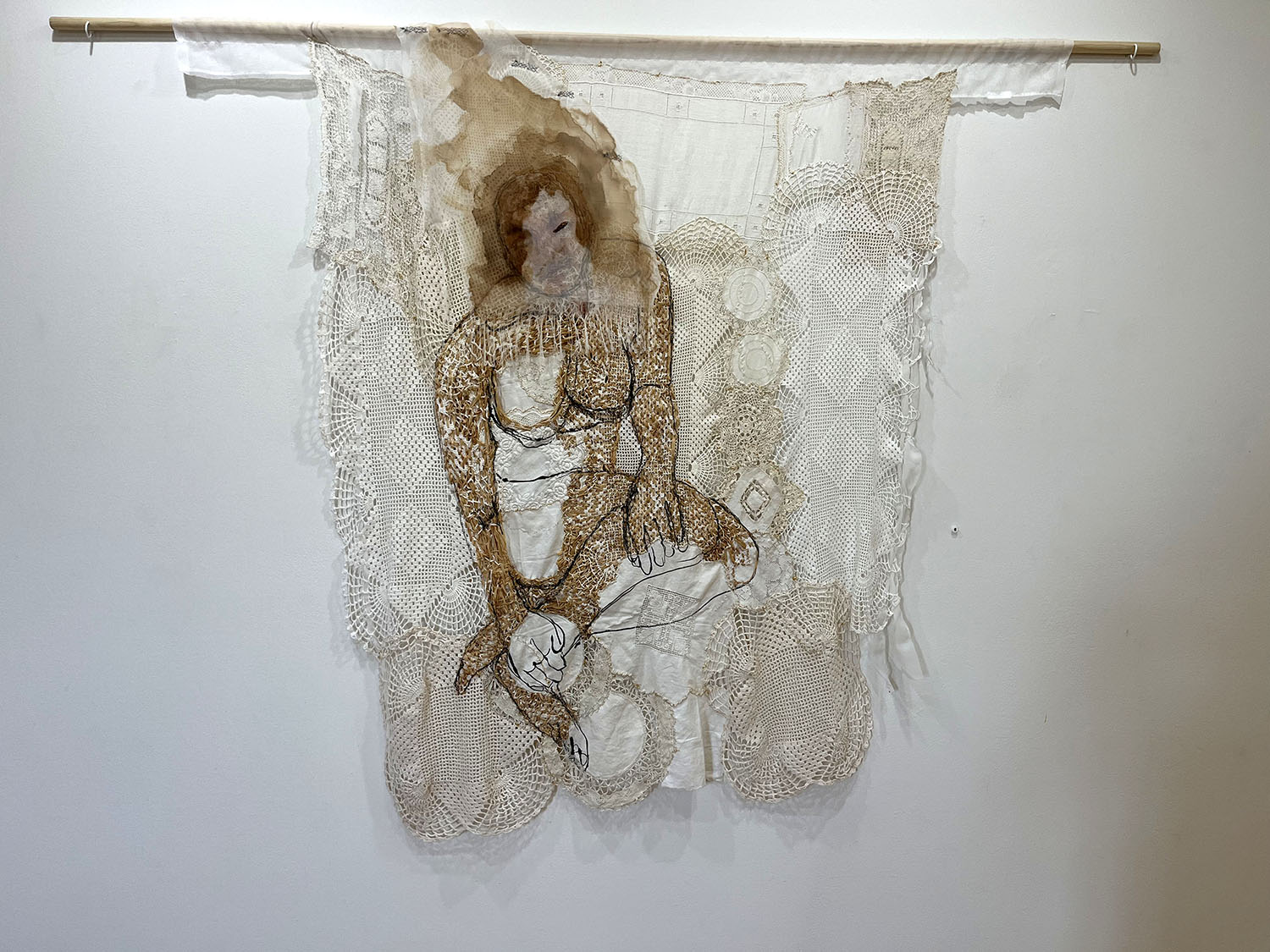
Is there something you think non-creatives will struggle to understand about your journey as a creative? Maybe you can provide some insight – you never know who might benefit from the enlightenment.
The non-creative population may be surprised at how much work out of the studio is involved with following a creative career. To a creative, the goal is usually to get back into the studio, but there is so much “paperwork” that is required. Applying for opportunities involves writing unique statements, with varying word count limits. Image files with different resolution requests. writing, and rewriting, and editing artist statements, marketing blurbs, social media posts. And the researching, for either professional opportunities or research for ideas you are exploring for new work. There are newsletters to write, videos to edit, thank you’s to send out, invites and promoting of exhibitions. There is writing descriptions of how artwork that is being sent a distance away should be hung correctly, especially when the work is not a conventional framed painting on a wall. Then there is accounting, and spread sheets listing all the work (I am a complete sham actually, because i have yet to complete that spread sheet, EXCEL…..UGH!). There are endless unsent and anxiety ridden emails sent to galleries in hopes of representation. There is the cozying up to rejection, and learning to not let it bring you down. There is the wrapping and packaging of artwork, and dealing with shipping, and couriers. Not to mention, building crates for large artwork to be shipped in, or finding funds to pay someone else to make that crate.
There is so much more, but I do think that the general public believe being a creative is all about the creation.
Contact Info:
- Website: https://www.christinesauerteigpilaar.com/
- Instagram: @christinesauerteigpilaar

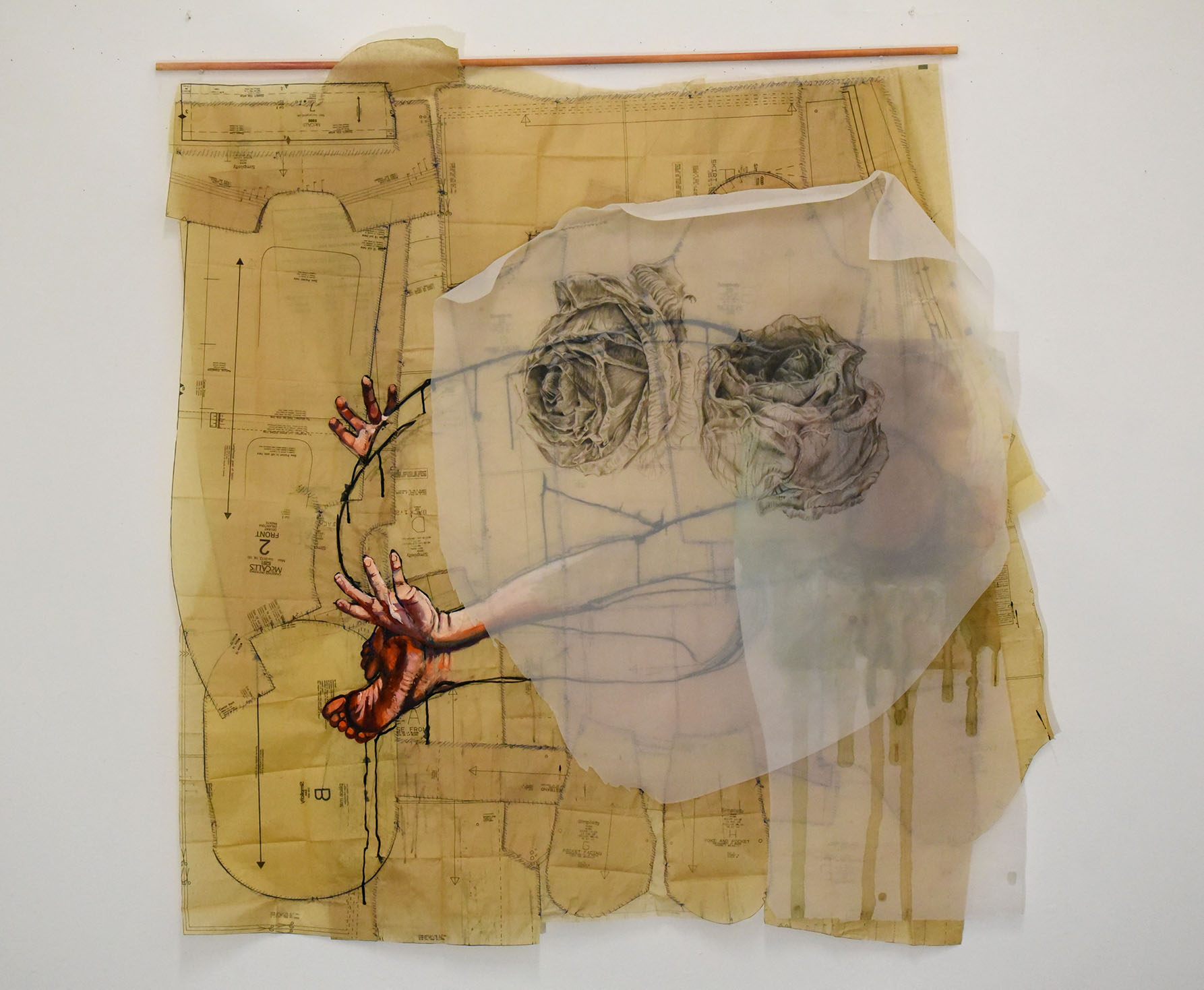
Image Credits
Portrait image: Megan Maloy Photography @meganmaloy (credit is on photo)


